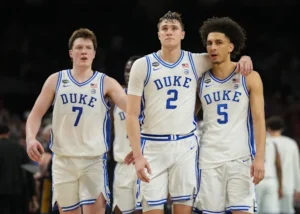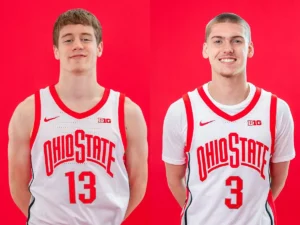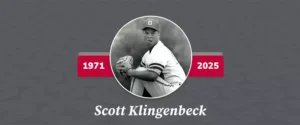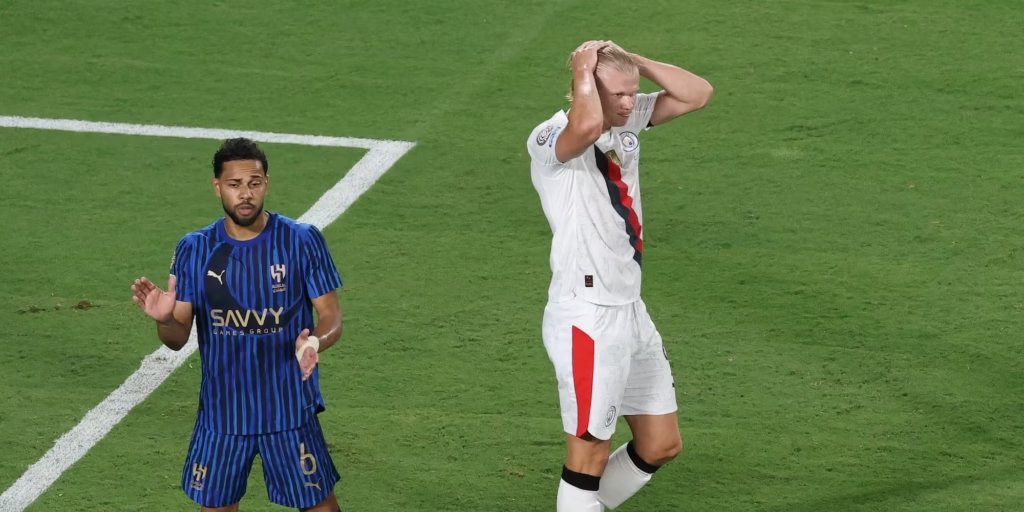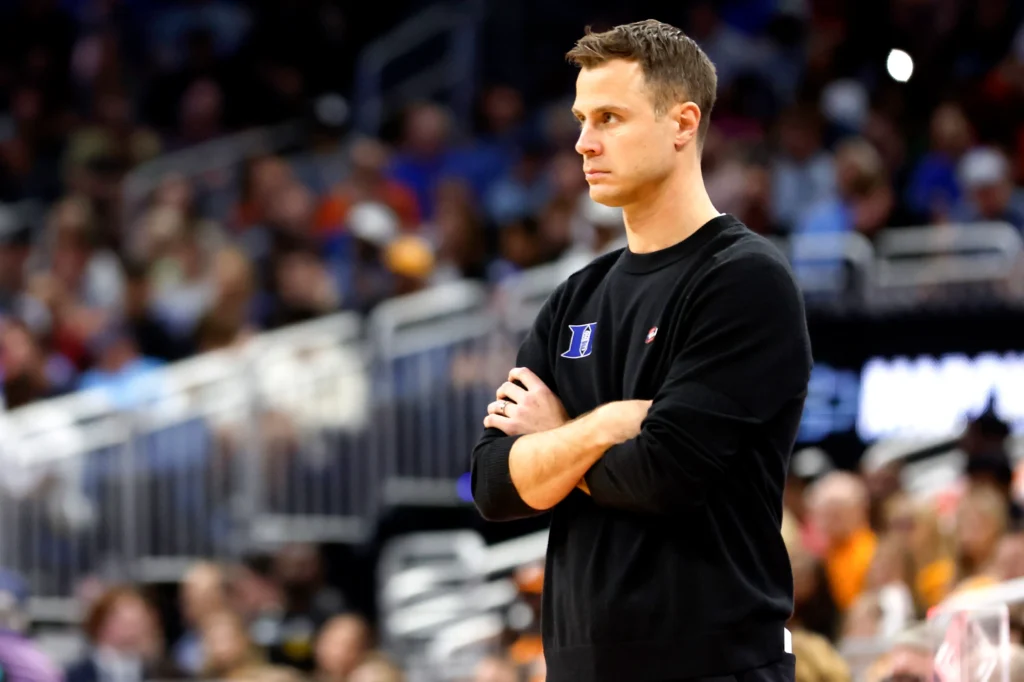
The 2025 NBA Draft has marked a seismic shift for Duke basketball. Five starters—Cooper Flagg, Tyrese Proctor, Kon Knueppel, Khaman Maluach, and Sion James—are all turning pro, with two retaining eligibility. That exodus wiped out the entire starting lineup from last season’s national runners-up. But head coach Jon Scheyer isn’t panicking. Instead, he’s embracing the challenge, executing a bold plan built on continuity, competition, and strategic acquisitions.
Scheyer’s first priority has been transparent, candid conversations. He met with every player—whether entering the draft, heading to the portal, or returning to campus—with honesty about roles, expectations, and future fit. Departing players like Tyrese Proctor and Jeremy Roach were treated with respect and support, and those coming back did so with clarity and commitment. That foundation sets the tone for the coming season.
Despite losing their five-person starting unit, Scheyer will return nearly every bench contributor from last year’s Final Four squad. That includes guards and forwards—Caleb Foster, Maliq Brown, Isaiah Evans, Darren Harris, and center Pat Ngongba—each of whom showed glimpses of high-level potential in limited roles. Among them, Isaiah Evans recently withdrew from the NBA Draft, signaling strong belief in his fit and future under Scheyer’s guidance. In elite program turnover, such retention is rare—and suggests Scheyer has sold a compelling vision to his core group.
Scheyer also prioritized securing freshman talent. The arrival of Cameron Boozer—joined by his twin brother Cayden and forward Nikolas Khamenia—brings NBA-level upside and youthful element, fueling high ceiling alongside the solid returning cadre. These freshmen represent a long-term investment in the culture and competitive depth Scheyer is constructing.
As for replacing departing impact players, Scheyer didn’t chase the biggest names in the transfer portal. Instead, he targeted high-character fits, like Washington State’s Cedric Coward—a versatile guard-forward hybrid with proven college production. That move aligns with Scheyer’s philosophy of building sustainable, cohesive rosters rather than quick fixes.
It’s a distinctly Duke strategy. Rather than loading up on portal stars or loading NIL money to dominate incoming freshmen, Scheyer is leaning into development. The emphasis is on internal growth and roster cohesion. He’s betting on the athleticism, skill, and familiarity of returning players like Foster, Evans, Ngongba, and Brown—supplemented by the upside of Boozer and other freshmen.
This plan signals confidence in player development, coaching impact, and cultural identity. It’s a manufactured reboot rather than panic-fueled overhaul. The message is clear: the competitive advantage lies in elevating players you know and trust, and complementing them with thoughtful additions, not chasing notoriety.
That said, the execution window is small and expectations remain high. ACC competition won’t soften. The Blue Devils will need the returning players to elevate both physically and mentally. Will Foster and Evans handle expanded roles seamlessly? Can Brown and Ngongba become more consistent pieces? Will freshmen like Boozer match college intensity quickly? These questions will be answered in summer workouts and fall camps.
Meanwhile, the portal game isn’t over. With several roster spots still open, Scheyer and staff remain active—reportedly pursuing two additional portal fits who complement their structure without threatening established culture. That shows a plan flexible enough to pivot but disciplined enough to stay the course.
Scheyer’s philosophy also values size and versatility. The team’s current roster features no players shorter than 6-foot-4, allowing him to deploy a lineup that can switch, defend multiple positions, and control the pace. That strategic edge echoes successful high-level teams and provides flexibility on both ends of the floor.
What stands out most is Scheyer’s bold organizational decision: he could have chased high-profile transfers or insisted on blockbuster recruiting classes, but instead he doubled down on his culture and identity. He retained five bench players from a Final Four team, convinced one to stay out of the draft, added smart portal additions, and invested in freshmen he could mold over time. That’s a statement of belief in his system—and in the broader Duke basketball identity.
Critics might question whether this strategy risks short-term performance. Without established stars leading the charge, Duke’s ceiling may seem lower than rosters stacked with one-and-done lottery picks or top portal stars. But Scheyer’s roster management history—in which reading of returners and fit has guided success—lends credibility. He’s shown he values fit over flash, cohesion over celebrity.
That calm, deliberate approach could keep Duke in contention for another title. It’s a path less flashy, but maybe more sustainable. It asks development of returning players, deep bench cultivation, and making calculated portal and freshman investments. It’s not glamorous, but it’s intentional—and potentially more durable than the cycles of boom-and-bust seen in other high-level programs.
This structure also pressures Scheyer and staff to deliver real conversion on court. They need visible leaps from key returners, smart integration of freshmen, and bridging youth with stability. If coaching and culture translate to execution, this roster can thrive—even against the powerhouses of the ACC.
Scheyer’s gambit is a bet on internal cohesion amidst external change. He’s saying: we don’t need to remake the roster each year to compete; we can build from within and trust our culture. And if that gamble pays off, Duke will have reinforced its identity as a team defined by development, not just recruitment.
Of course, failure would be visible—slipping from Final Four contender to middle-of-the-pack would bring scrutiny. But Scheyer seems comfortable owning that risk. He’s shown conviction through communication, culture maintenance, and retention success.
In short, Duke faces a defining offseason. The entire starting lineup is gone, but Scheyer has retained nearly all bench contributors, secured elite freshmen, and targeted portal additions with fit. He’s chosen continuity over chaos—an unusual, calculated approach. The future of this season hinges on development, chemistry, and growth under pressure.
As summer workouts begin and classrooms return in August, Duke’s narrative will rest on whether that development pays dividends. Coach Scheyer’s plan is clear: build from within, stay disciplined, stay cohesive, and let the process unfold. The next chapter of Duke basketball is being written—not with flashy transfers or headline freshmen—but with conviction in culture, clarity in vision, and faith in player progression.
